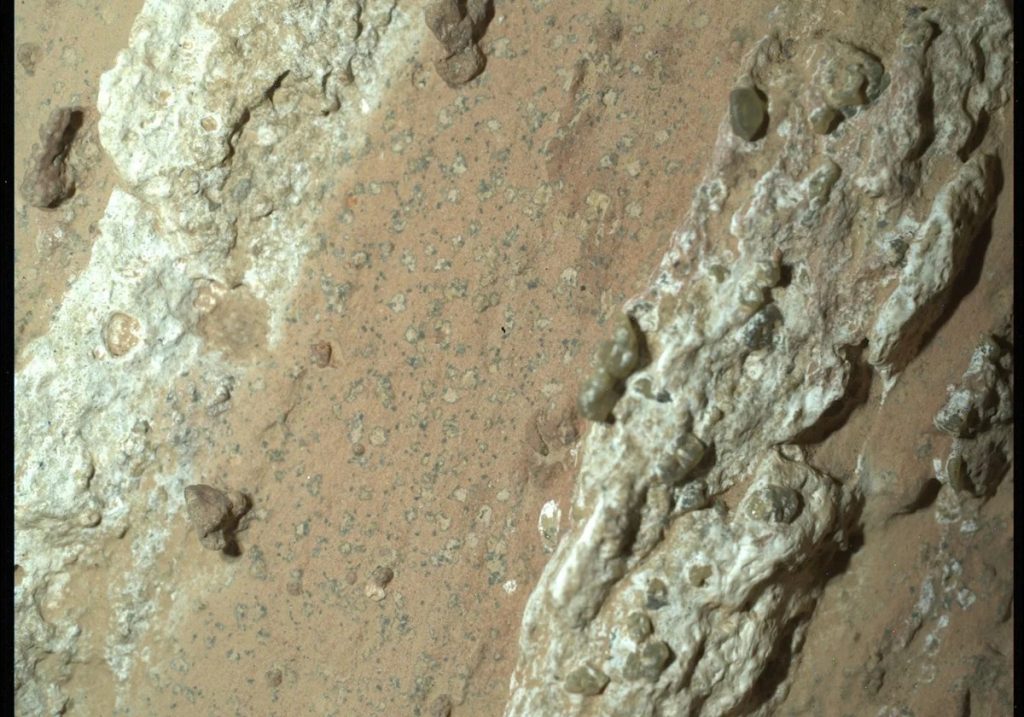Perseverance uncovers Martian rock that may hold clues to ancient life
actividad microbiana, Cheyava Falls, descubrimiento, NASA, Perseverance
16 September 2025
A new discovery by NASA’s Perseverance rover has caught scientists’ interest: a rock on Mars dubbed “Cheyava Falls” shows unusual leopard-like spots and mineral veins that may offer clues about ancient life on the Red Planet. The rock was found in July 2024 in the Jezero crater, specifically in the area of the ancient fluvial valley Neretva Vallis, where water is believed to have once flowed.
The rover’s scientific instruments detected organic compounds and minerals such as calcium sulfate, hematite, and olivine in the rock, along with black halos surrounding white spots—patterns reminiscent of those seen on Earth in rocks that bear evidence of past microbial activity. However, researchers caution that the same features could arise through purely chemical processes without any life involvement.
The approximate size of the rock is one meter by 0.6 meters. Core samples were taken, and various techniques (lasers, X-rays, detailed imaging) have been applied to characterize it as thoroughly as possible using the rover’s instruments such as SHERLOC, PIXL, and Mastcam-Z.
To establish whether microbial life truly existed on Mars in that distant past, it will be essential to return samples like “Cheyava Falls” to Earth-based labs, where even more precise instruments can be used. The findings might reshape our understanding of whether Mars was ever habitable, as well as the limits of life in extreme environments.








